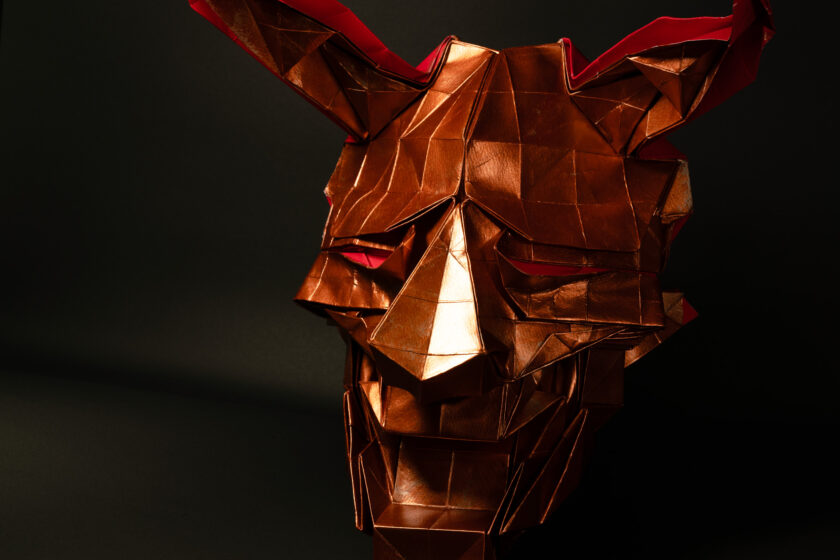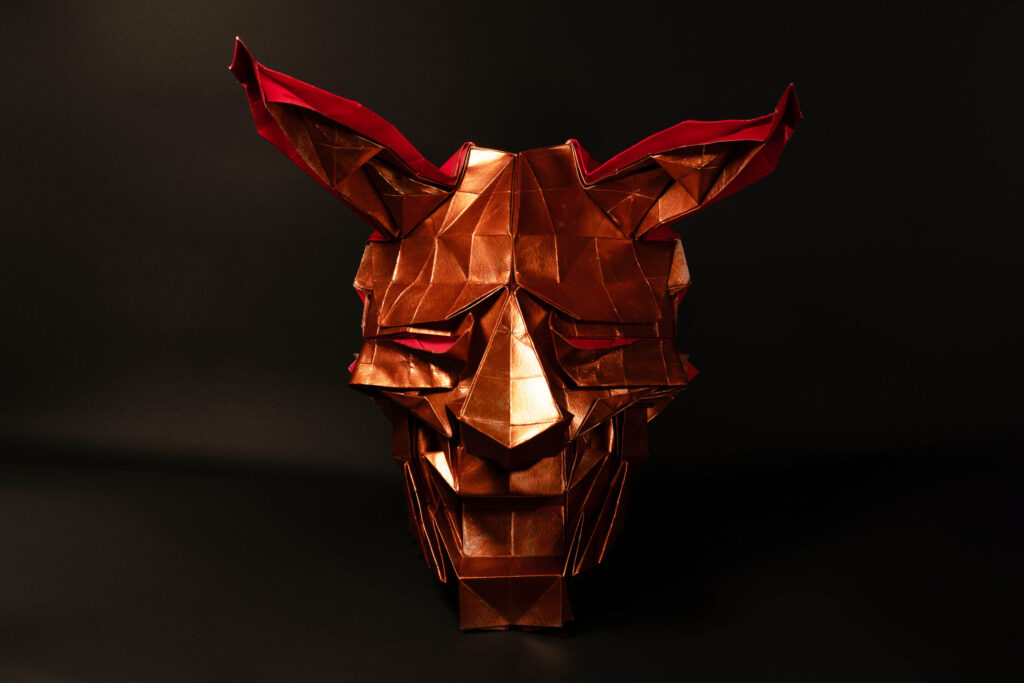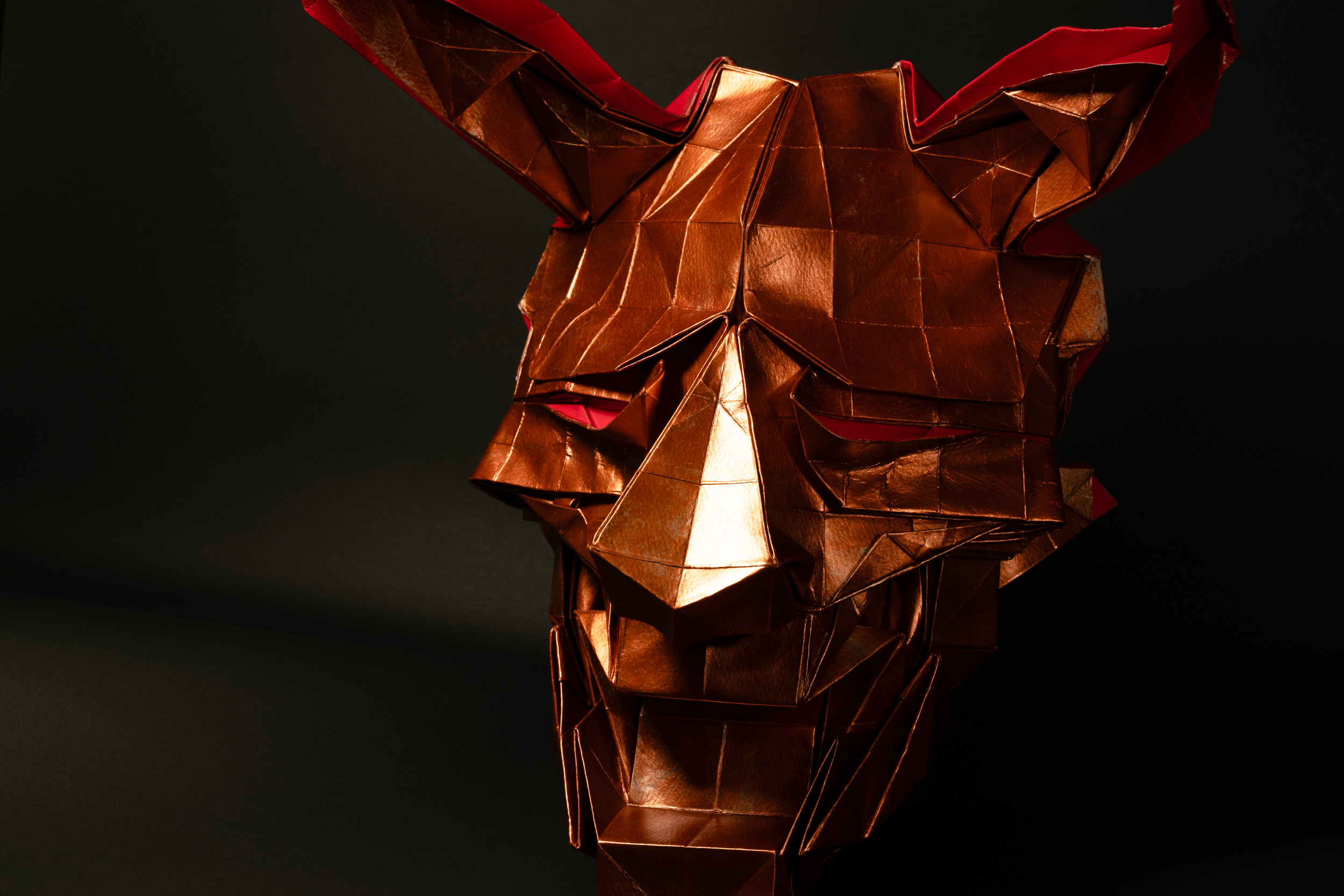A snarling face of rage, beast-like fangs emerging from its mouth, and ominous horns protruding from the forehead—this is the Hannya mask, now recognized alongside Mount Fuji, geisha, and samurai as a visual symbol of Japanese culture. In this piece, I’ve recreated the iconic Hannya mask using origami.
In recent years, the Hannya mask has gained wider recognition not only through increased awareness of Noh theatre—its original source—but also via tattoos, T-shirt designs, wood carvings, and even 3D-printed reproductions shared online.
The Dual Nature of the Hannya Mask
Noh is a traditional Japanese stage art that was developed in the 14th century during the Muromachi period. The Hannya mask is most famously used in Noh plays such as Aoi no Ue and Dōjōji. It represents a woman who, overcome by jealousy and anger, transforms into a demon and becomes a vengeful spirit.
In Aoi no Ue, the character who becomes a vengeful spirit is a woman whose romantic relationship has faded. Seeing the man she once loved now favor another woman, she burns with jealousy and sorrow. The mask designed for this role reflects both of those emotions.
From the front, the mask appears terrifying, consumed by rage. But from below, it reveals a sorrowful, even tragic expression. This duality is a hallmark of Noh masks in general—they are designed to shift expression depending on angle and light, despite their fixed form.
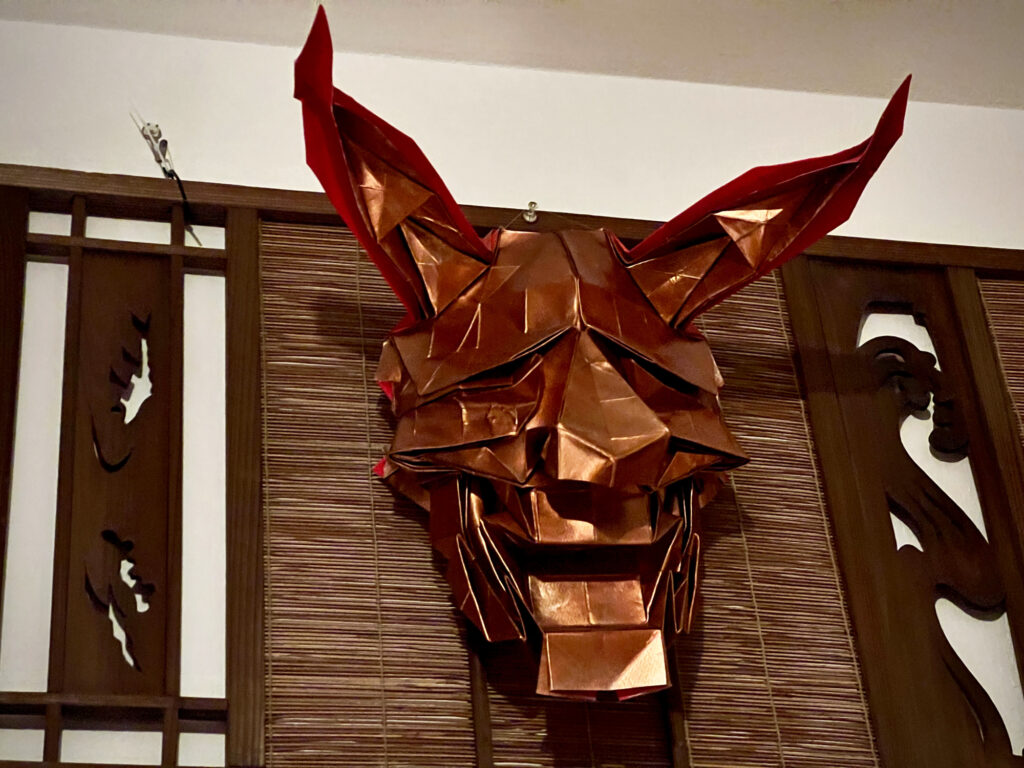
When Terror Turns Cool
In today’s world of 24/7 electric lighting, it’s difficult to imagine the darkness of pre-modern Japan, where after sundown, the only light came from flickering candles or the moon. As Junichirō Tanizaki described in his 1933 essay In Praise of Shadows, traditional Japanese arts—such as lacquerware—were designed to reveal their true beauty or mysterious aura only in dim light.

In that same spirit, performances of Noh and Kabuki took place under the glow of faint flames. Viewers would watch pale masks and bold face paint emerge eerily from the darkness, filling in the unseen details with their imagination. What was terrifying then felt so partly because of what was not fully visible.
Today, these once-frightening images have lost some of their aura in the bright glare of modern lighting. Instead, we find them “cool”—bold, graphic, symbolic. And while this new appreciation is valuable, we should not forget the quiet power of what remains unseen.
Designing for Shadow
With that in mind, I designed this origami Hannya mask to be best appreciated in low light. Its form emphasizes deep shadows and metallic-like surfaces, creating a sense of volume and texture. For a future variation, I’m thinking of using pop colors—maybe even pink—to push the design further into modern cool.
Hannya Mask
designed/ folded by Tomoaki Hamanaka
2024
Paper(Mermaid) , Acrylic paint
25cm×30cm×20cm
Other work about the light of Japanese culture
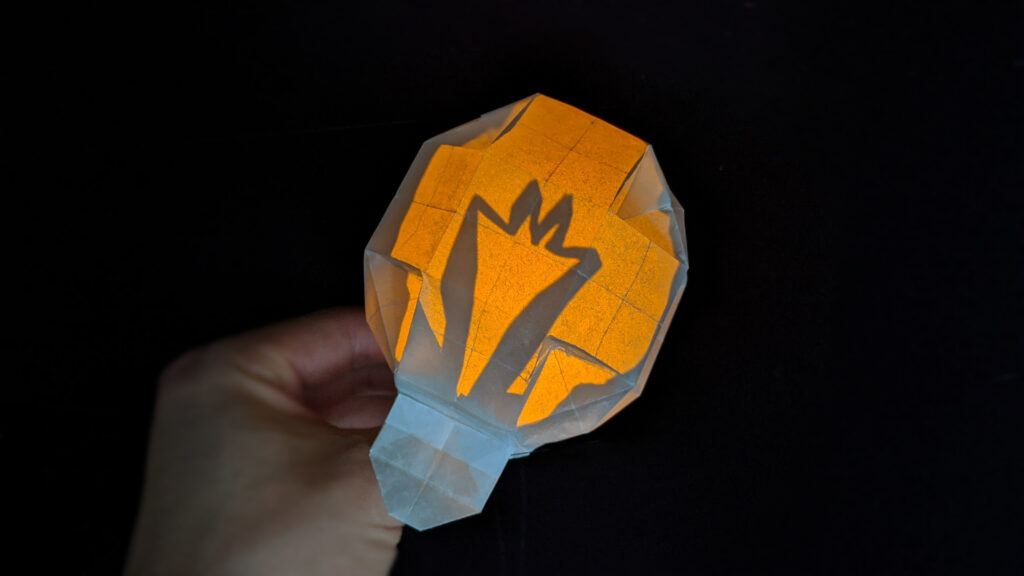
.png)
